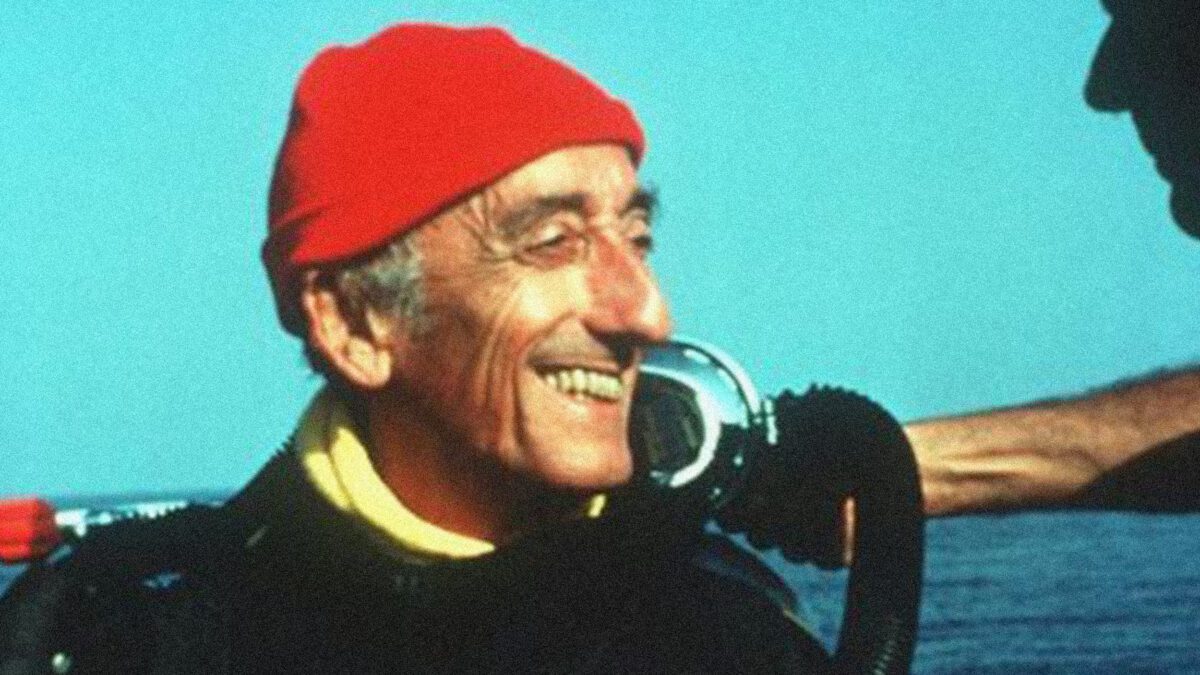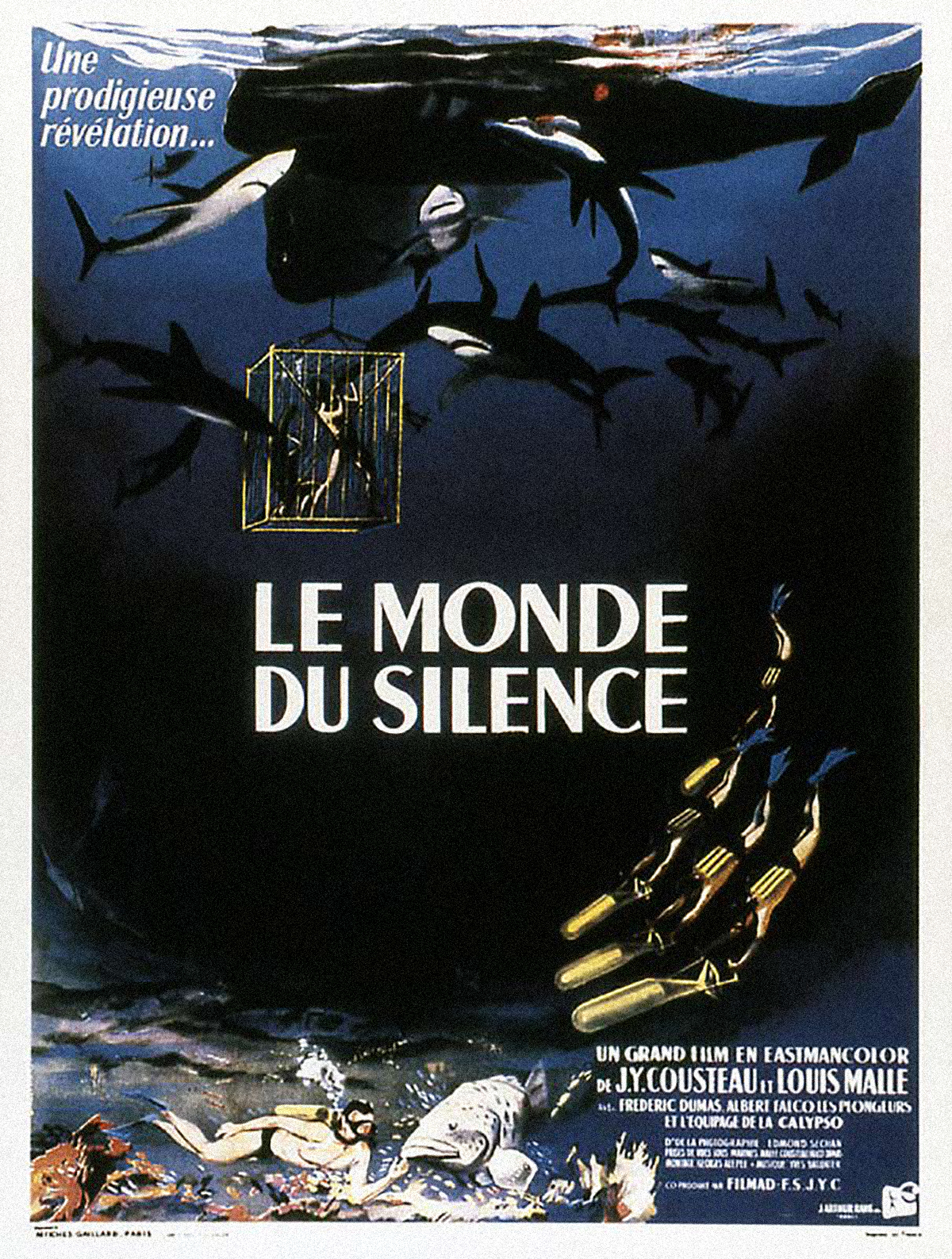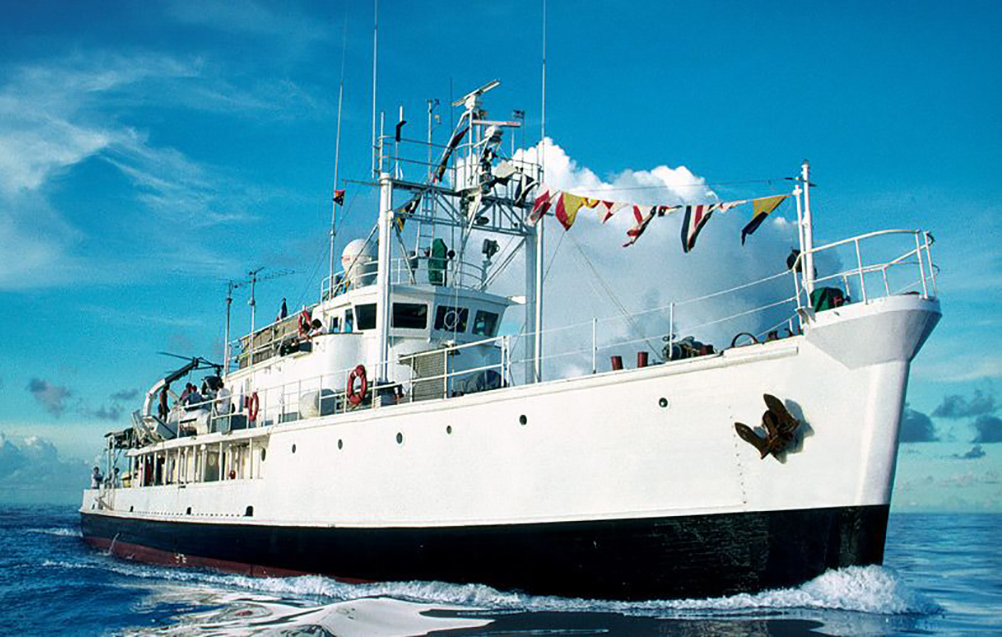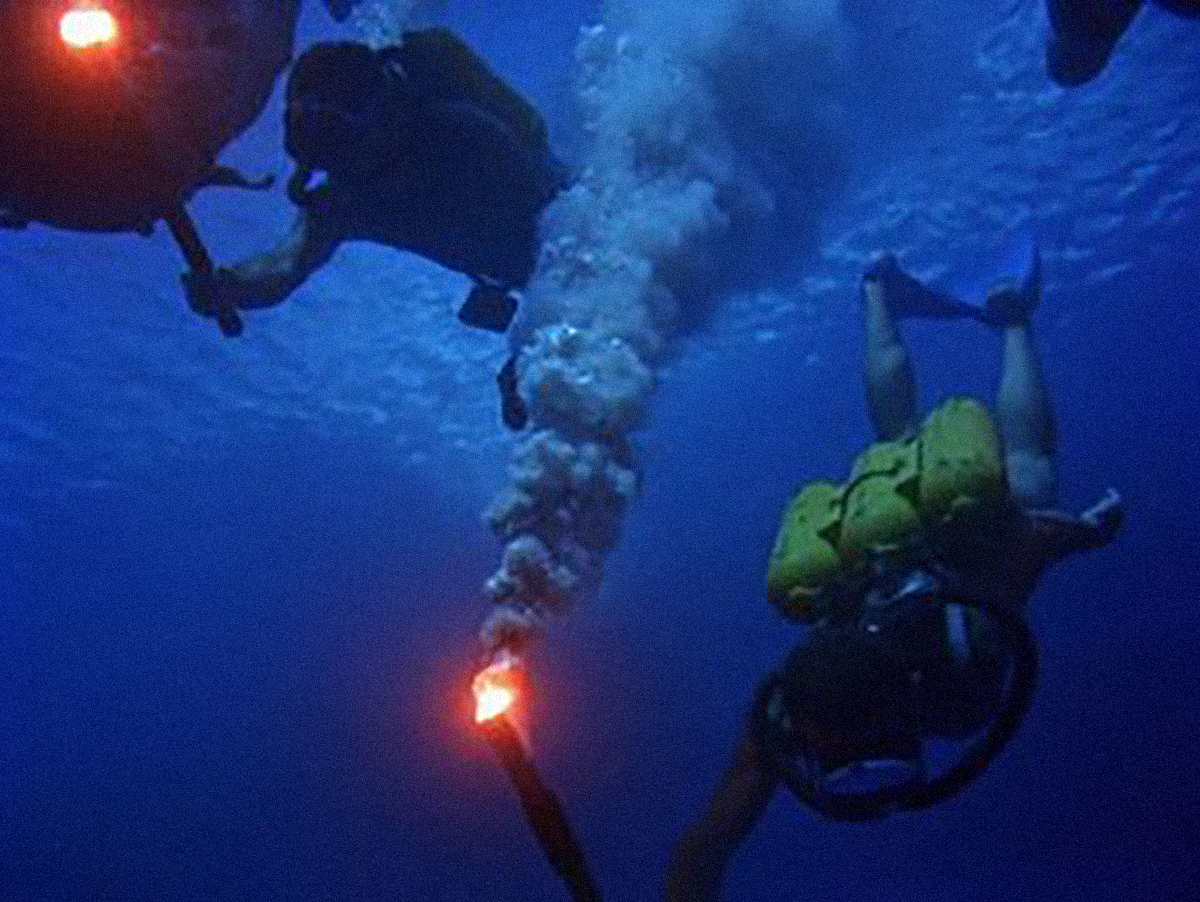Jacques Cousteau — A Deep Dive

He gets a lot of mention on Red Hat Factory. The legend, the sea farer — or more accurately, below-sea farer — the style guru for Red Hatters across the world and diving equipment development pioneer. But was he also a megalomaniac? Let’s find out.
Born 1910 in France, his career first pointed him towards the air. He had completed mostly every step on the way to become a naval pilot, when luck struck him.
He broke both his arms in a car accident.

It broke him out of his current career path, and maybe it made him think twice. After that accident, he chose to pursue his passion for the ocean, for which he would devote his whole life.
“The sea, once it casts its spell, holds one in its net of wonder forever.”
Jacques-Yves Cousteau
Cousteau the documentary film maker
At the beginning of WWII, Jacques-Yves Cousteau and his wife Simone took refuge in Megève, a small village near the French Alps — not far from Mont Blanc. Here he met Marcel Ichac.
Cousteau and Ichac had one thing in common — documentary films. Ichac’s passion for showing inaccessible mountains to the public, and Cousteau’s passion for the depths, made for an interesting duo.

It began a long line of documentary releases, some of which made film history.
“Every explorer I have met has been driven—not coincidentally but quintessentially—by curiosity, by a single-minded, insatiable, and even jubilant need to know.”
Jacques-Yves Cousteau — The Human, the Orchid, and the Octopus
In 1943, they won their first prize for a co-made documentary called Par dix-huit mètres de fond, or in English, 18 meters deep. It was filmed on the French Embiez Islands with no breathing equipment.
The camera was always with Cousteau, and his two main interests remained diving and film making through his life.
His most significant release was without a doubt The Silent World, which won an Academy Award for best Documentary Feature, and was the first ever documentary film to win an Palme d’Or at the Cannes Film Festival. The film was cut from 25 kilometer of film reel, filmed over 2 years, and brought the depths to the public like never before.

Cousteau, inventor of the Aqua-Lung
The desire to go ever deeper and unveil hidden depths to the public, drove Cousteau and his crew to ever greater lengths. The next film Épaves, or Shipwrecks, was filmed using the first ever Aqua-Lung prototype.
The Aqua-Lung is the invention that brought air-tank based diving equipment to the general public, and Émile Gagnan, a French engineer, together with our man Cousteau are credited with its creation.

The Aqua-Lung was not a completely new idea — few inventions are — but it came from a couple of other genius contraptions combined to maximize the time one could spend underwater.
Once again it was Cousteau’s desire to go deeper that drove the innovation forward. And it would be far from the last time.
“From birth, man carries the weight of gravity on his shoulders. He is bolted to earth. But man has only to sink beneath the surface and he is free.”
Jacques-Yves Cousteau
Cousteau, Captain of the Calypso
For some years Cousteau worked with the brand new Underwater Research Group, which was created by the French navy to add force behind his endeavors to explore the depths.
His time within the group led him on everything from mine-clearing missions, to rescue operations, to spying endeavors across the entire world. All along, he pioneered underwater technology and explored further possibilities.

After a few years he left the navy and leased his now infamous ship, the Calypso. The lease was one franc per year — a mere symbolic sum — and the ship became his home base. A research vessel fitted for diving and documentary film making.
“The sea, the great unifier, is man’s only hope. Now, as never before, the old phrase has a literal meaning: we are all in the same boat.”
Jacques-Yves Cousteau
Cousteau, maker of the diving saucer
It was during his time on Calypso, after years of experience and clout generation, that he teamed up with Jean Mollard, and they built the commonly dubbed “diving saucer.”
It was exactly what it sounds like — a flying saucer that could go to 350 meters of depth. The official name was SP-350 and the nickname, Denise. It could handle a crew of two, laying down, and was famously used by Cousteau to explore the wreck of HMHS Britannic.

Actually, the search for Britannic, which is a sister ship of the Titanic and the Olympic, began under quite interesting circumstance.
Jacques Cousteau was in Greece looking for Atlantis. Yes, that Atlantis — the legendary city, sunken in the sea.
He didn’t find the city, but during his time there, he was contacted by the Titanic Historical Society, who wanted him to search for Titanic’s lost sister. The Britannic had sunk at some unknown location while serving as a hospital ship during WWI. This one he did find, and its discovery began what would mount up to 68 manned dives to the wreck by Jacques and his team.
One of these dives, in Denise, happened when Jacques was 67 years old, and it became one of Cousteau’s deepest dives ever.
Cousteau, creator of the Conshelf underwater colony
Astronauts actually owe a lot to Cousteau. He was among the first to spearhead a humane habitat in an atmosphere not fit for human life. Under the sea, he built a village, where him and his crew could spend months at a time.

There has been a Conshelf I, II, and III built and launched.

One of the shelfs even had a docking station for Denise.
Obviously, the adventurers were studying ocean life while they lived down below, but also, their living situation provided insight into how a different air pressure affected humans. Their hair and beards grew slower, but cuts healed quicker. It was an alien world, and they made it habitable in a whole new way.
The Conshelves are covered in much more detail in this brilliant Medium article.
“The best way to observe a fish is to become a fish.”
Jacques Yves Cousteau
Cousteau the megalomaniac
There is a Jacques Cousteau quote that’s circulating the internet. It’s pretty shocking, and after some research, it turns out it’s completely genuine.
“In order to save the planet it would be necessary to kill 350,000 people per day.”
Jacques-Yves Cousteau
The quote in its context is just as bad as it sounds. Talking to UNESCO about what we could do to eliminate human suffering and disease, he replied that it was probably not a great idea to do, since for the planet to survive we would have to eliminate 350,000 people a day. (My understanding of the quote is that we should let nature run its course on the sick, and don’t interfere.)
Lightly perusing Jacques Cousteau’s life, you see an otherworldly, almost painting-esque adventurer, but if you dig a bit deeper, his humanity shines through, in all its imperfection. And as you’ll see, he was a man willing to admit to his shortcomings.
I am not a fan of holding a man to his mistakes, but this is a side of the picture that needs painting as well, if we’re doing the deep dive.
Costeau the environmentalist
Many connect Jacques with a fiery engagement for nature — as we saw on the earlier quote — but for him to become the spokesman for mother nature that he became, a complete u-turn was required.
During the filming of The Silent World, Cousteau and his crew famously injured a whale on purpose, thus attracting sharks who ate the poor fellow — all for the movie shots.
At another time they used dynamite near a coral reef to study the species that come floating to the surface — something that to your modern ears may sound worse than the filthiest swearword.

However, later in Cousteau’s life he did a 180, and began speaking up for the ocean big time.
To such a point was his turnaround that he is said to have insisted on sharing the clips where him and his crew mistreats oceanic life to create great shots — instead of attempting a cover up.
Though he tried to dive ever deeper, he was willing to let his humanity float to the surface.
“Water and air, the two essential fluids on which all life depends, have become global garbage cans.”
Jacques Yves Cousteau
In the beginning of his career, movie making seems to have taken the front seat, and the ocean was only a tool to be manipulated in ways to get the best shot. However, as his understanding of the ocean, and its relationship to humankind deepened, the focus turned.
His turnaround engagement resulted in the founding of the Cousteau Society for the Protection of Ocean Life, which still is actively teaching people across the globe about the ocean and its ecosystems.
Costeau the Red Hatter
Here at Red Hat Factory, of course, we connect with Jacques not only as fellow adventurers with a passion for creating wilderness-related media, but also through our namesake red hat.

The red knit cap that Jacques Cousteau wore became an icon, very much because of the man himself (and his crew, who also wore them). (Wes Anderson also had a role in bringing it to the next generation.)
After having spent most his life on sea, he slowly became a tv-personality and a household name. Through both film and tv he made his way into people’s living rooms, thus connecting the red hat with adventure forever and after.
The red hat has a whole story in itself, running back through the navy, but that’s a subject for another article. All we need to cap this article off (pun not intended), is a fantastic quote from one of Cousteau’s tv-appearances.
“The Calypso crew and I will be undertaking a series of voyages of exploration and discovery in all the seas of the world. We have few rules and no uniforms, only the right cap.”
Jacques-Yves Cousteau
And so do we. The world is at our feet, and we have few rules — only the right cap.
Cousteau continues to inspire, not only for his hunger for the deeps, and skill in the craft of film making, but for his willingness to change as he went along in life, and to not attempt a perfect façade.